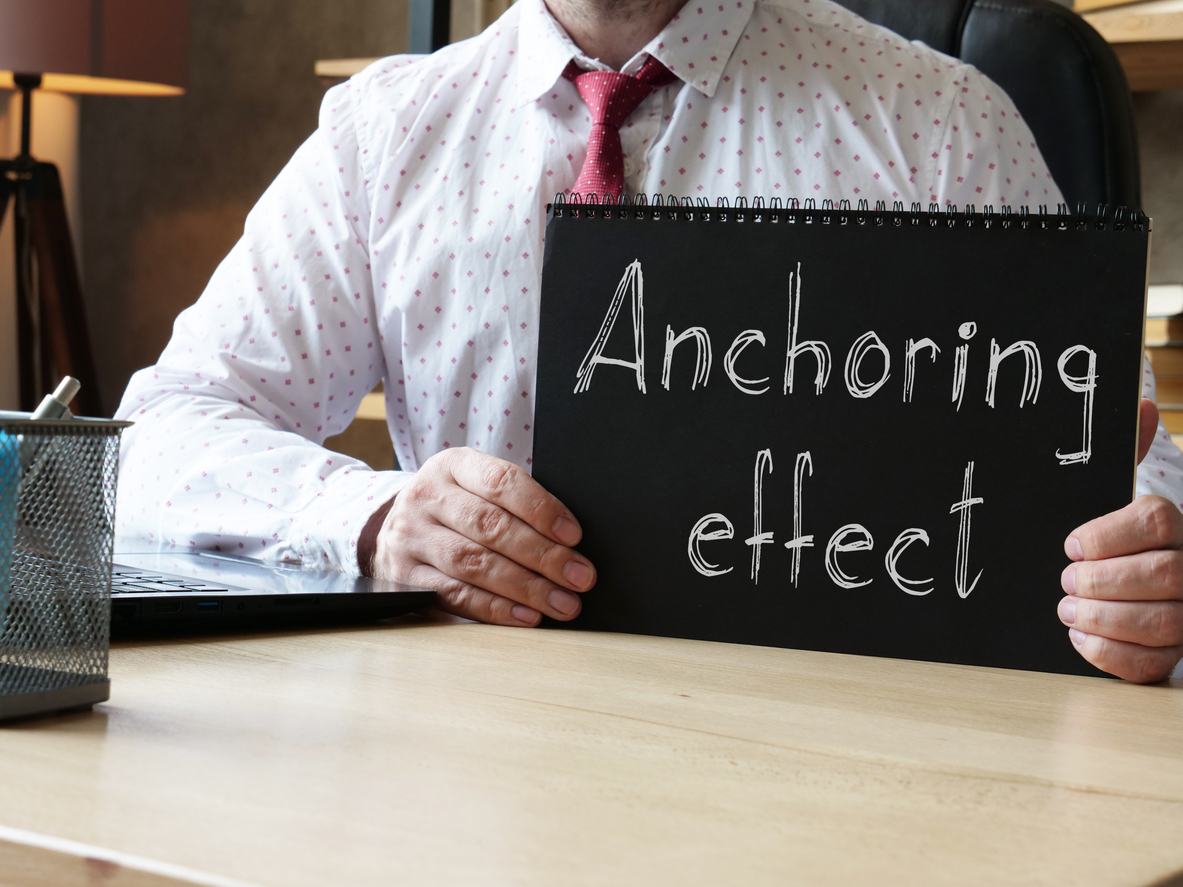Have you ever gotten a quote for a service and then the final bill was more than the quote? How did you feel? Ripped off?
What if the final bill came in under the quoted price (wishful thinking, I know, but bear with me)? How did this make you feel? Like you got a bargain?
Sounds like common sense really… but that feeling may not at all mean you got a good or bad end of a deal, it could just be a residual of Anchoring Bias…
What is the Anchoring Bias?
Anchoring Bias is an overreliance on existing information or the first available information we get. It shapes our perception of reality and, as a result; influences the decisions we make.
Anchoring Bias is probably one of the most ‘manipulative’ biases. It frames your thinking in situations that are new (or rare) to you, where you may lack intuition and you are more vulnerable to being exploited.
Let’s see if we can manifest the Anchoring Bias right now… Have a go at answering these two questions:
– Will Daniel Craig get paid more or less in the two upcoming Knives Out sequels, than the $25 million pay-cheque he got for his last Bond appearance in No Time To Die?
– How much do you think Daniel Craig will actually get paid in the two upcoming Knives Out sequels?
Unless you’re a movie/Hollywood buff, or otherwise know the actual amount, the answer may surprise you…
The deal that Daniel Craig struck for the 2 sequels is $100 million.
Was your answer to question 2 closer to the $25 million mark than the $100 million mark? If it was, it was because you may have used the $25 million dollar amount provided in question 1, as an anchor.
Example
I may be giving away my age here, but do you remember the printed photo books craze? You go online and upload your photos to a website, and they ship you a photo book? Yes? Well, I used to do them. A lot. After I had kids, understandably… they were not just photos of me!
The way I got into doing them was when one such website emailed me a promotional voucher to get my first album done. It was $29.99 (down from $49.99 – a whopping 40% off).
Every few months, they would nudge me, via email, to get another book done, but the price of $49.99 prevented me from buying it. You see, the price I paid originally, $29.99, was my anchor as to what I expected to pay in the future. All of a sudden, anything more than that was a bit too pricey for me.
A few months later, when I visited other photo book websites for comparison purposes, I discovered that most were charging $59.99 for the same service. So, in fact, $49.99 was still a great deal!
Overcoming Anchoring Bias
Do your own research. Create your own anchor.
Much like other biases, the key to managing the effects of Anchoring Bias is to slow down, not make any rash decisions, get more data, and evaluate decisions while fully informed.
Whilst walking into a shop and hastily buying a new dishwasher because it is 50% off may sound like you are getting a bargain, it is worth checking what your money can buy you elsewhere (or even in the same store), before closing the deal.
Mirta is a Director of ViAGO Limited, a behavioral science enthusiast, and a mum to three boisterous boys.
